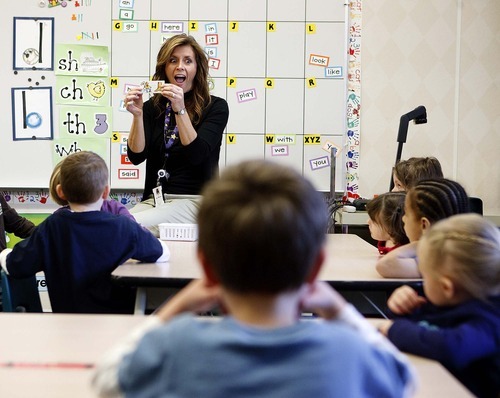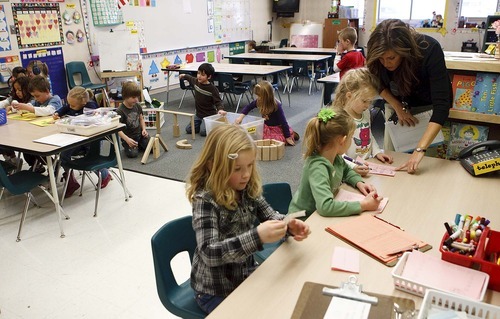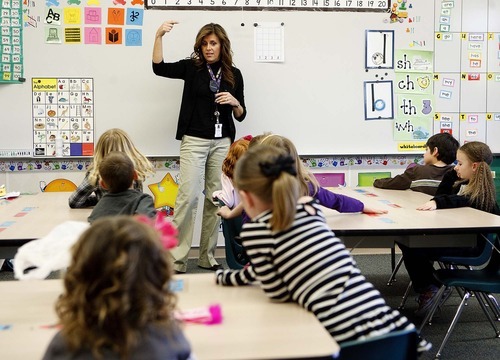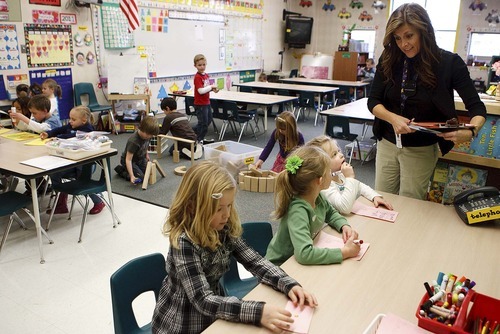This is an archived article that was published on sltrib.com in 2011, and information in the article may be outdated. It is provided only for personal research purposes and may not be reprinted.
After years of red ink and spending cuts, state tax projections have surged by an additional $47 million, a sign the economy is growing again and, Gov. Gary Herbert says, proof that the budget he proposed is on the mark.
The $47 million increase means lawmakers have a total of $263 million they could use to restore programs that have been stripped down. But they are heading in a different direction, assuring there will be some budget cuts.
"It's a good sign. It's a positive sign about the economy, but to think we can address all the requests that are out there just isn't true," said House Speaker Becky Lockhart, R-Provo, who added that the governor's budget is merely his recommendation.
Herbert — who had criticized the Legislature's process of cutting budgets, then going back and choosing programs to spare as unnecessarily "convoluted" and giving the body "a black eye" — said the new budget projections released Tuesday bolster his $11.9 billion plan.
"It certainly gives the Legislature greater confidence that the numbers in my recommended budget are solid," Herbert said. "My budget is not only viable, it's sustainable."
One area where there seems to be agreement: Both Herbert and lawmakers say education will be a top priority during budget negotiations.
Senate Budget Chairman Lyle Hillyard, R-Logan, said Senate leaders have told budget subcommittee leaders to find $60 million to pay to educate an estimated 14,700 new students expected to enroll in public schools in the fall.
Todd Hauber, state associate superintendent, said: "[The budget numbers] definitely went in the right direction, but the Legislature still has the challenge of balancing several different budgetary pressures, so now, we'll see where education growth funding really pans out in the priority process."
Hauber said that during the past two years, more than 25,000 new students have entered Utah's public schools without any increase in funding. "It's time to have education growth funded," he said.
The new budget numbers reflect a stronger-than-expected economic recovery in the state. Hillyard said he was particularly encouraged by the increase in income-tax collections.
"That means more people are working and earning money," he said, "and that's always a good sign for us."
During the past two years, as the Utah and national economies suffered, lawmakers whacked more than $1.3 billion out of the state budget.
In December, Herbert proposed his budget that kept spending for most state agencies level and increased funding for public education.
Lawmakers came in looking to cut another $313 million — cuts that could have meant the early release of 850 prison inmates, elimination of a Highway Patrol DUI squad, cuts to breast and cervical cancer treatment and screening — with plans to restore programs depending on how much money was available.
Republican legislators are concerned about the so-called structural imbalance, the result of legislators using onetime money — which isn't replenished after it is spent — as a Band-Aid to sustain continuing programs.
The concern is that when the money runs out, it could force the state to make tough choices.
The major difference between the GOP legislators and the governor is that the lawmakers want to eliminate the entire imbalance, while Herbert proposed getting rid of about half, using rainy-day funds and accelerating the tax payments of self-employed individuals.
Senate President Michael Waddoups, R-Taylorsville, said getting rid of the discrepancy is "a good budgeting process."
"It's the way Utah has developed the reputation as a well-managed state," he said.
Democrats side with Herbert — that it is too much to swallow at once.
"We've always contended that making the complete reduction of the structural deficit is not the fiscally responsible thing to do," said House Minority Leader David Litvack, D-Salt Lake City. "It goes beyond good budgeting. It would do harm to our economy."
The $263 million in revenue growth means that most — but not all — the Legislature's base budget cuts could be restored.
There is also an additional $25 million in onetime money that lawmakers can use to keep programs afloat another year.
The wrestling match now begins over which programs to prioritize and fund.
Last week, budget leaders heard recommendations from subcommittees on $434 million worth of programs in the most critical need — some of it restoration of programs that had been given the budget ax and some of it new spending.
Kris Fawson, co-director of the Legislative Coalition for People With Disabilities, said the numbers are better, but she is still worried about the proposed cuts.
Even if the budget for people with disabilities stays level, many will still be without services. And programs such as independent living centers, which teach disabled people how to live on their own, are still staring at a potential 10 percent cut.
"We'd like to see them take it a little slower," Fawson said. "It didn't take us one year to get here. It should take us more than one year to get out, instead of decimating programs."
Senate Minority Leader Ross Romero, D-Salt Lake City, said he's pleased that the budget picture is improving, but it indicates that the Legislature wasted its time cutting 7 percent from programs, only to circle back and decide how much of it to restore.
"It is disappointing that some legislators did not demonstrate … faith in Utah's economy," Romero said. "Democrats opposed the budget cuts put forward at the beginning of the session. Today's revenue estimates support our position that those cuts were unnecessary."
Sen. John Valentine, R-Orem, suggested the picture may not be so rosy.
He said rising gas prices could be a drag on economic growth.
"We still have some dark clouds on the horizon we'll have to be very watchful for," he said.
Lisa Schencker contributed to this report. —
New budget numbers
FY 2012 December projections
General fund • $1,950,975,000
Education fund • $2,678,400,000
Total • $4,629,375,000
FY 2012 revised projections
GF • $1,964,000,000
EF • $2,712,759,000
Total • $4,676,759,000
Difference
GF • + $13,025,000
EF • $34,359,000
Total • + $47,484,000











